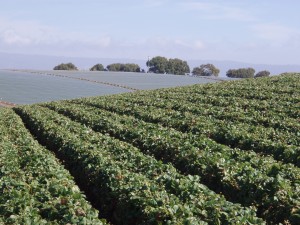 Vegetable growers in Florida are using plasticulture and drip irrigation best practices to improve water and nutrient management on more than 5,000 acres of production. And the effort is paying off, according to one Extension official familiar with the practice.
Vegetable growers in Florida are using plasticulture and drip irrigation best practices to improve water and nutrient management on more than 5,000 acres of production. And the effort is paying off, according to one Extension official familiar with the practice.
Bob Hochmuth, Extension agent for the University of Florida (UF), made a presentation at the Great Lakes Fruit, Vegetable & Farm Market EXPO in Grand Rapids, Michigan that focused on the management of drip Irrigation. He described a process of securing adequate moisture in the root zone without over-filling.
“The increased concern over the impact of agricultural practices on water quality in Florida has resulted in the grower’s need to adopt best management practices (BMPs),” Hochmuth said. “The successful adoption of BMPs in plasticulture production of vegetables in north Florida has been greatly facilitated by Extension programs in conjunction with industry and other agency involvement.
“Growers are more likely to adopt BMPs when they can evaluate them on their own farm,” he said. “Long-term educational program efforts – including hands-on teaching workshops at a research facility combined with on-farm demonstrations – proved to be a very effective strategy in helping vegetable growers using drip irrigation and plasticulture improve water and nutrient management practices.”

 Toro has announced the release of
Toro has announced the release of  Vegetable growers in Florida are using plasticulture and drip irrigation best practices to improve water and nutrient management on more than 5,000 acres of production. And the effort is paying off, according to one Extension official familiar with the practice.
Vegetable growers in Florida are using plasticulture and drip irrigation best practices to improve water and nutrient management on more than 5,000 acres of production. And the effort is paying off, according to one Extension official familiar with the practice.